Unlocking the World of Precision Manufacturing
When it comes to shaping the world around us, few processes play as pivotal a role as metal machining. Whether you're a curious enthusiast or an industry professional seeking deeper insights, this article is your ultimate guide to understanding the essence of metal machining. You'll discover the intricacies of different machining methods, the importance of material selection, and the industrial applications that rely on this transformative process.
Metal machining is the art of reshaping metal into desired forms through various processes. This fundamental technique has evolved significantly over the years, turning blocks of metal into intricate components that fuel numerous industries. Let's dive into the fascinating world of metal machining.
To truly appreciate metal machining, we must first journey back in time. The history of this craft is rich and varied, with innovations that have shaped human civilization.
| Era | Advancements in Metal Machining |
|---|---|
| Ancient Civilizations | Forging and basic shaping of metals for tools and weapons. |
| Middle Ages | Development of water wheels and windmills for mechanical power. |
| Industrial Revolution | Advent of steam engines and early machine tools. |
| 20th Century | Introduction of computer numerical control (CNC) machining. |
The journey from basic metalwork to CNC precision is a testament to human ingenuity and the relentless pursuit of excellence.
Over the centuries, a multitude of machining methods have been developed. Here, we provide a brief glimpse of these techniques:
| Machining Method | Description |
|---|---|
| Lathe Machining | Rotating a workpiece while a cutting tool is applied to shape it. |
| Milling Machining | Using rotary cutters to remove material from a workpiece to create various shapes. |
| Drilling and Hole Machining | Creating holes in metal with specialized tools. |
| Grinding Machining | Using abrasive wheels to achieve tight tolerances and smooth finishes. |
| Stamping and Punching Machining | Creating shapes and patterns using dies and punches. |
Each of these methods has its unique applications and advantages, ensuring that no matter the project, there's a method to match.
In the upcoming sections, we'll explore each of these methods in more detail, along with the considerations in material selection, the nuances of the machining process, and real-world applications. By the end of this comprehensive guide, you'll be well-versed in the world of metal machining and ready to navigate its intricacies.
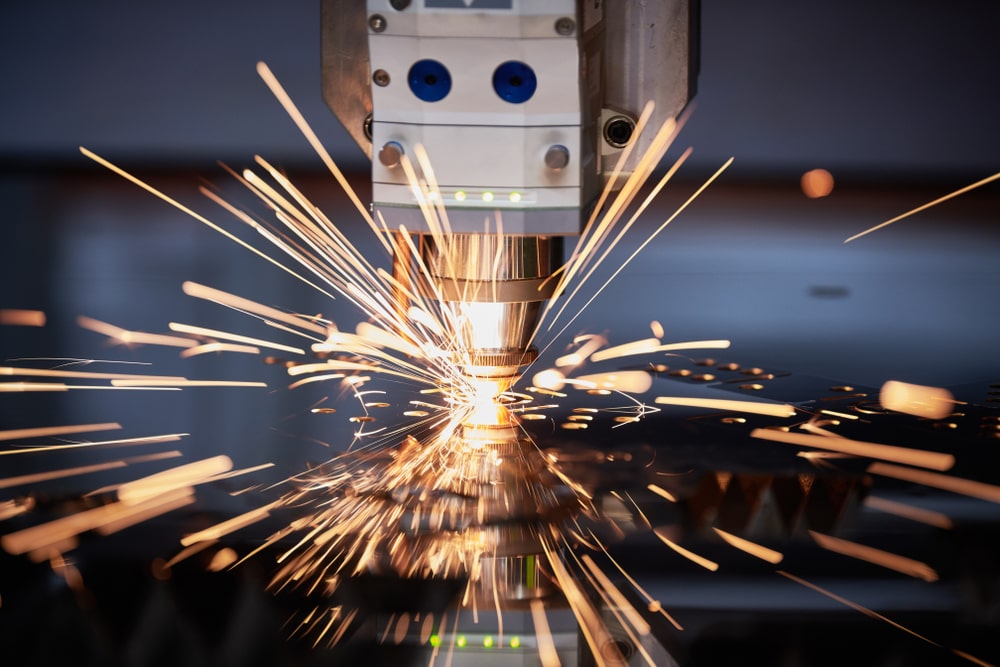
Let's begin our journey by revisiting the historical roots of metal machining. From the ancient civilizations that forged swords and tools to today's cutting-edge CNC machines, you'll be amazed by how far we've come.
The origins of metal machining can be traced back to the dawn of civilization. Early blacksmiths used rudimentary tools and the power of fire to heat, shape, and forge metals into basic forms. These craftsmen laid the foundation for a process that would become essential to countless industries.
The Middle Ages witnessed the rise of water wheels and windmills, which provided mechanical power for various tasks, including metal machining. These innovations allowed for more consistent and precise metalworking.
The Industrial Revolution of the 18th and 19th centuries marked a significant turning point in the world of metal machining. It brought about the development of steam engines, which powered the first machine tools. This era saw the birth of lathes, planers, and other early machining equipment.
The 20th century brought revolutionary advancements in machining technology. The introduction of Computer Numerical Control (CNC) machining in the mid-20th century was a game-changer. CNC machines are capable of executing precise, automated instructions, making complex and intricate metalwork achievable.
Today, CNC machining is at the forefront of metalworking, and its versatility allows for the production of highly detailed and precise components across various industries.
In the modern age, metal machining has embraced digital technologies. CAD/CAM (Computer-Aided Design/Computer-Aided Manufacturing) systems, along with the integration of sensors and automation, have further elevated the precision and efficiency of metal machining.
As we move into the future, the possibilities for metal machining seem limitless. Emerging technologies like additive manufacturing (3D printing) are reshaping the landscape, offering new avenues for creating intricate metal parts.
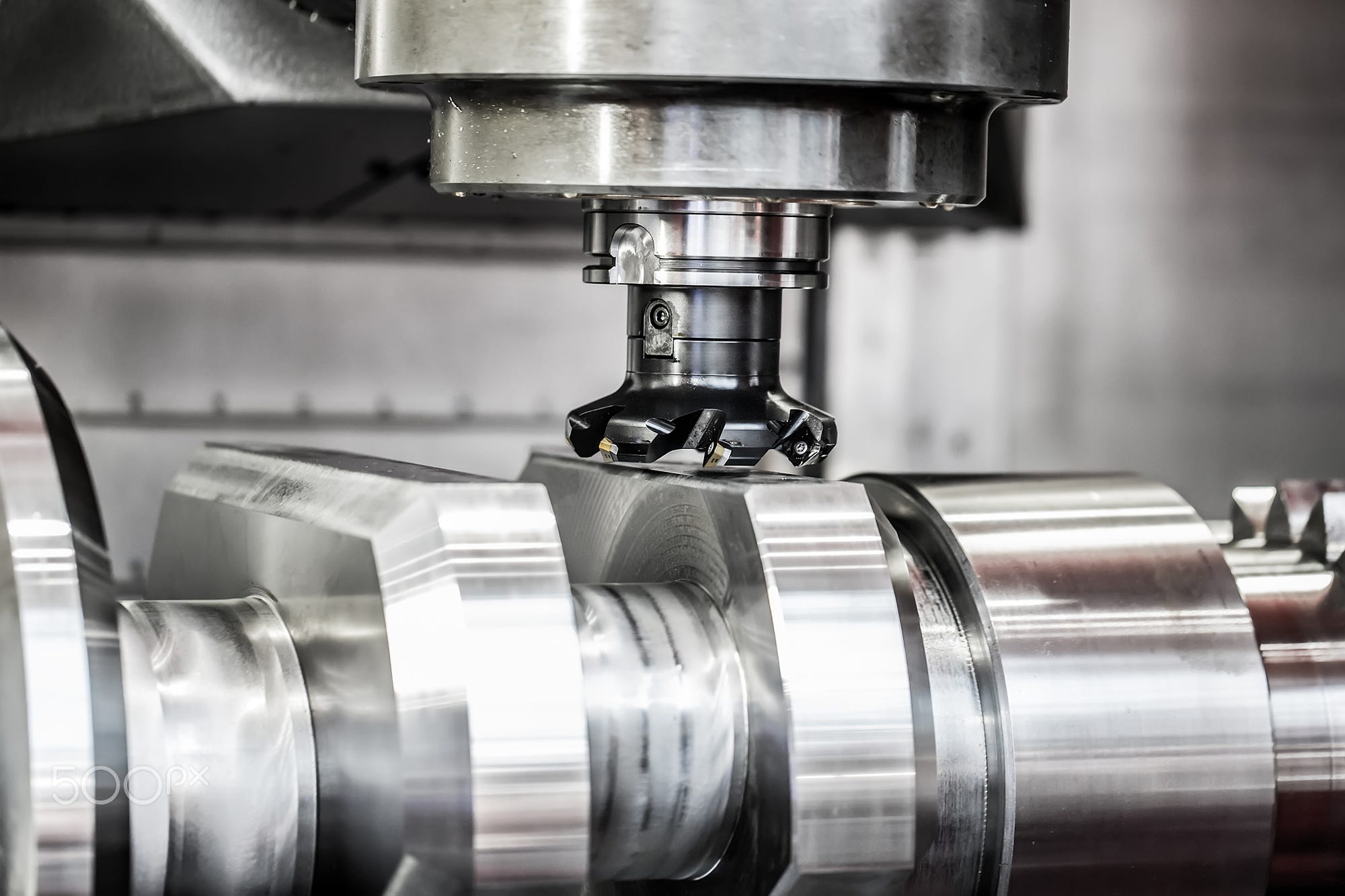
One of the foundational techniques in metal machining is lathe machining. This method involves rotating a workpiece while a cutting tool is applied to shape it. It's a versatile and precise process used to create cylindrical shapes, grooves, and threads in metals.
To truly understand lathe machining, let's explore its essential components and how they work together:
The Workpiece: This is the metal component that you want to shape. It's securely attached to the lathe's spindle, allowing it to rotate.
The Chuck: The chuck is a gripping device that holds the workpiece in place. It ensures that the workpiece rotates smoothly and consistently.
The Cutting Tools: These tools come in various shapes and sizes and are used to remove material from the workpiece. They are positioned at the desired cutting point, and precision is essential in this step.
Lathe machining is a subtractive manufacturing process, meaning it removes material from the workpiece to create the desired shape. The precision comes from the ability to control the workpiece's rotation and the cutting tool's movement.
The applications of lathe machining are diverse and essential in several industries:
Automotive Industry: Lathe machining is used to create precision parts like crankshafts, camshafts, and transmission components.
Aerospace Industry: In the aerospace sector, lathe machining is critical for producing engine components, landing gear parts, and fasteners.
Musical Instrument Manufacturing: The precision of lathe machining is ideal for crafting intricate parts of musical instruments, such as brass instruments' valves.
Medical Device Manufacturing: In the medical field, lathe machining is used for creating components like orthopedic implants and surgical instruments.
Lathe machining's ability to create precise, cylindrical shapes makes it a cornerstone of manufacturing processes. Whether it's a gear for an automobile or a valve for a musical instrument, the precision achieved with lathe machining is unparalleled.
Milling is another essential metal machining method. It utilizes rotary cutters to remove material from a workpiece, creating various shapes and forms. Milling is a versatile process that can produce flat surfaces, slots, gears, and complex 3D shapes.
To comprehend the intricacies of milling, it's crucial to explore the fundamental components and principles involved:
The Worktable: The workpiece is secured on the worktable, which can move in multiple directions to position the workpiece for precise cuts.
The Spindle: The spindle holds the cutting tool, which is rotated at high speeds to remove material from the workpiece.
Cutting Tools: Milling cutters come in various shapes, including end mills, ball mills, and face mills. The choice of cutter depends on the desired outcome.
Milling is capable of both simple and complex operations. It can produce flat surfaces, slots, and contours on the workpiece. The ability to control the movement of the workpiece and the cutting tool makes milling a versatile process.
Milling machining is crucial in various industries due to its versatility:
Aerospace Industry: Milling is used to create precise components for aircraft, such as wing spars and landing gear parts.
Automotive Manufacturing: Milling is essential for crafting engine blocks, transmission cases, and chassis components.
Die and Mold Making: In the manufacturing of dies and molds for plastic injection or metal casting, milling achieves intricate details and high accuracy.
General Metal Fabrication: Milling is widely employed in general metalworking shops for tasks like shaping, slot cutting, and drilling.
Milling's flexibility and precision make it a cornerstone of manufacturing. Whether you're creating a custom component or crafting parts for the aerospace industry, milling ensures that the end product meets the desired specifications. For those seeking exceptional CNC milling services, Richconn offers a trusted solution.
Drilling is a fundamental process in metal machining that focuses on creating holes in metal. It's a versatile technique employed in various industries, from construction to manufacturing. Let's delve into the specifics of drilling:
Tools and Equipment: The primary tool used in drilling is the drill bit, which comes in various shapes and sizes to create different hole types. Drilling machines, such as drill presses, are commonly used to control the drilling process.
The Drilling Process: Drilling involves rotating the drill bit at high speeds while applying axial force to penetrate the workpiece. The result is a hole with precise dimensions and tolerances.
Hole Types: Drilling can create a wide range of hole types, from simple through-holes to more complex blind holes, counterbores, and countersinks.
Creating precise holes is essential in various applications. Here are some key aspects to consider when drilling:
Selecting the Right Drill Bit: Choosing the appropriate drill bit is crucial. Factors like material type and desired hole size influence the selection.
Workpiece Preparation: Properly securing the workpiece is essential to prevent movement during drilling.
Drilling Speed and Feed: Controlling the drill's rotation speed and the rate at which it enters the workpiece is vital to achieving accurate results.
Drilling is essential in various industries, ensuring that components are securely fastened, fluids can flow through pipelines, and electrical connections are made. From construction projects to the assembly of machinery, drilling plays a pivotal role.
Grinding is a machining process that uses abrasive wheels to remove material from a workpiece. This technique is known for its ability to achieve tight tolerances and exceptionally smooth finishes. Let's dive into the world of grinding machining:
Understanding the mechanics of grinding is key to appreciating its precision:
Abrasive Wheels: Grinding relies on abrasive wheels made of various materials, such as aluminum oxide and diamond. These wheels grind away material through friction.
Workpiece and Wheel Interaction: The workpiece and the abrasive wheel interact under controlled conditions. The wheel rotates at high speeds, while the workpiece is fed into it with precision.
Achieving Precision: The ability to remove material in fine increments allows grinding to achieve high precision. This makes it ideal for creating parts with exact dimensions and smooth surfaces.
Grinding is indispensable in several industries where precision is non-negotiable:
Aerospace Industry: The aerospace sector relies on grinding for the production of turbine blades, landing gear components, and critical engine parts.
Medical Device Manufacturing: In the production of medical devices like orthopedic implants, dental instruments, and surgical tools, grinding ensures a high degree of precision.
Tool and Die Production: Grinding plays a crucial role in the manufacturing of dies and molds for plastic injection, ensuring that complex shapes and fine details are accurately replicated.
General Manufacturing: Grinding is widely used in general manufacturing for tasks like sharpening cutting tools, creating precise gears, and achieving smooth surface finishes.
The precision offered by grinding machining is unmatched, making it an integral part of industries where accuracy and quality are paramount.
Stamping and punching machining is a unique process that involves creating shapes and patterns using dies and punches. It's a versatile method that has widespread applications across various industries:
Automotive Industry: Stamping is vital for producing automotive body panels, structural components, and chassis parts.
Electronics Manufacturing: The precision of stamping is essential for creating intricate components for electronic devices.
Packaging Industry: Stamping and punching play a role in shaping and forming packaging materials and containers.
Understanding the process of stamping and punching is crucial for appreciating its significance:
Die and Punch Sets: Stamping involves a set of dies and punches. The die is used to shape the workpiece, while the punch is driven into the workpiece to create the desired form.
Material Feeding: The workpiece, typically a metal sheet, is fed into the machine. The dies and punches are precisely aligned to create the desired pattern.
Force and Precision: The punch exerts force on the workpiece, causing it to deform or cut. Precision is crucial in ensuring that the end product meets the specified dimensions and tolerances.
The versatility of stamping and punching makes it an indispensable process in industries where shaping and forming materials are central to manufacturing.
Let's explore the diverse applications of stamping and punching in different industries:
Automotive Manufacturing: Stamping is the backbone of the automotive industry, producing everything from car body panels to engine components.
Electronics Industry: In the electronics sector, stamping creates intricate parts for devices like smartphones and computers.
Packaging and Containers: The packaging industry relies on stamping for creating containers, cans, and packaging materials with precision.
Appliance Production: Stamping and punching are used in the manufacturing of appliances like refrigerators, washing machines, and ovens.
The ability to shape materials with precision and speed makes stamping and punching a vital component in a wide range of industries.
To excel in metal machining, one must begin with the right metal material. Various types of metals are commonly used, each with its unique properties. Let's explore some of the most common ones:
| Metal Type | Key Properties |
|---|---|
| Aluminum | Lightweight, corrosion-resistant, and easily machinable. Ideal for aerospace and automotive applications. |
| Steel | Known for its high strength and durability, making it suitable for a wide range of industries, from construction to machinery. |
| Stainless Steel | Resistant to corrosion and staining, often used in the medical, food, and chemical industries. |
| Copper | Excellent electrical and thermal conductivity, making it essential for electrical components and heat exchangers. |
| Brass | Combines the corrosion resistance of copper with the machinability of zinc. Used in musical instruments and plumbing. |
When choosing a metal material for your machining project, several factors come into play:
Strength Requirements: Consider the strength needed for the final component. Some applications require high tensile strength, while others may prioritize lightweight materials.
Corrosion Resistance: Depending on the environment in which the component will be used, corrosion resistance may be a critical factor.
Machinability: Some metals are easier to machine than others. Machinability affects the efficiency of the machining process.
Thermal Conductivity: If the component needs to dissipate heat, thermal conductivity is an important consideration.
Electrical Conductivity: In applications where electrical conductivity is crucial, the material's electrical properties are vital.
Cost and Availability: Practical considerations like material cost and availability can influence the selection of materials, particularly in high-volume production.
Understanding the properties and characteristics of different metals allows you to make an informed choice based on the specific requirements of your project.
To make an informed decision on material selection, it's essential to weigh all these factors. The right material ensures that the end product meets the desired performance, longevity, and cost-effectiveness.
From Design to Finished Product
The journey through metal machining doesn't start and end with the machine itself. It encompasses several stages, from the initial design phase to the production of the finished component. Let's explore the key steps involved in the machining process:
The process begins with a well-thought-out design. This design phase involves creating detailed drawings and 3D models of the component to be machined. Computer-Aided Design (CAD) software is commonly used for this purpose. During this phase, considerations like material selection, tolerances, and geometric dimensions are established.
Once the design is finalized, the next step is material selection. Based on the design specifications and required properties, the most suitable metal material is chosen. As we discussed earlier, this decision can significantly impact the performance of the final product.
Preparing the workpiece is a crucial step in ensuring that the machining process proceeds smoothly. This involves securing the metal material, ensuring it's properly aligned, and making any necessary cuts or adjustments before machining begins.
The heart of the process lies in the actual machining operations. Whether it's turning, milling, drilling, grinding, or stamping, this is where the workpiece is shaped and refined to meet the design specifications.
Quality control is an ongoing process throughout machining. Precise measurements and inspections are conducted to ensure that the component meets the specified tolerances and quality standards.
Depending on the project, post-machining processes may be required. This can involve treatments like heat-treating, surface finishing, or coating to enhance the component's properties.
Before the component is deemed ready for use, it undergoes final inspection and testing. This ensures that it meets all quality, safety, and performance standards.
The final product is carefully packaged to protect it during transport and handling. It is then delivered to the client or incorporated into the assembly process, depending on the project's specifications.
Understanding and managing each of these stages is essential for successful metal machining. It ensures that the final component meets the desired specifications and quality standards.
Metal machining is a precise and intricate process, but it's not without its challenges. Recognizing and addressing these challenges is crucial for achieving optimal results. Here are some common issues faced in the world of metal machining:
Tool wear is a natural consequence of the machining process. As cutting tools interact with metal, they gradually wear down, affecting the quality and precision of the machining. Regular tool maintenance and the use of high-quality tool materials can mitigate this issue.
Metal materials may contain imperfections or defects that can lead to issues during machining. These defects can include inclusions, voids, or inconsistencies in material composition. Material inspection and testing can help identify and mitigate these problems.
As metal is removed during machining, chips are produced. Managing these chips is essential to prevent tool damage, maintain cleanliness in the work area, and ensure the safety of operators. Proper chip evacuation and containment systems are crucial.
Vibration and chatter during machining can lead to poor surface finishes and reduced tool life. These issues can result from tool imbalances, improper fixturing, or incorrect cutting parameters. Careful setup and monitoring can minimize these problems.
Machining generates heat, which can affect both the tool and the workpiece. Excessive heat can lead to tool wear, workpiece distortion, and altered material properties. Cooling and lubrication systems are used to manage thermal effects.
Meeting tight tolerances and achieving desired surface finishes are essential in many machining projects. Consistently achieving these requirements requires precision in tool selection, machine setup, and process control.
Environmental factors, such as temperature and humidity, can impact the machining process, particularly when working with certain materials. Ensuring the work environment is controlled and optimized is critical for achieving consistent results.
Recognizing these challenges and having strategies in place to address them is essential for successful metal machining. By combining the right tools, materials, and techniques, many of these challenges can be effectively mitigated.
The automotive industry relies heavily on metal machining to produce critical components that ensure the safety, performance, and reliability of vehicles. From engine parts to transmission components and precision gears, machining plays a pivotal role in automotive manufacturing. High-strength materials, precise tolerances, and durability are essential for automotive applications, making metal machining an indispensable process.
In the aerospace industry, metal machining is at the forefront of innovation. Aerospace components demand the highest precision and quality. Machining is used to create turbine blades, landing gear components, and structural parts for aircraft. The lightweight materials and intricate designs required in aerospace engineering are made possible through the precision of metal machining. The industry's stringent quality and safety standards rely on the precision and reliability of machining processes.
The medical device manufacturing industry places a premium on precision and biocompatibility. Whether it's orthopedic implants, surgical instruments, or dental components, metal machining ensures that medical devices meet the highest quality and safety standards. The precision of machining is essential in crafting intricate components that have a direct impact on patient care and well-being.
In addition to these industries, metal machining plays a vital role in numerous other sectors. From the production of consumer electronics to the creation of components for household appliances, metal machining offers customized solutions for a wide range of applications. The ability to tailor components to meet specific requirements and exacting standards is a hallmark of metal machining.
As you've journeyed through the world of metal machining, from its historical roots to its modern applications, you understand the importance of precision, quality, and reliability in this field. To meet your metal machining needs, you deserve a trusted partner who shares your commitment to excellence.
Richconn Precision is a renowned leader in CNC machining services, offering a wide range of solutions for industries such as automotive, aerospace, electronics, and medical device manufacturing. With state-of-the-art equipment and a team of highly skilled professionals, Richconn delivers exceptional results on every project.
Precision and Quality: Richconn's commitment to precision and quality is unwavering. They employ the latest CNC machining technology to meet the most demanding specifications and tolerances.
Material Expertise: With a deep understanding of various materials, including aluminum, steel, stainless steel, copper, and brass, Richconn ensures that the right material is selected for each project.
Industry Excellence: Richconn serves a diverse range of industries, offering customized solutions that meet the unique requirements of each sector.
Advanced Equipment: Richconn's machining facilities are equipped with cutting-edge CNC machines, allowing for high efficiency and accuracy in every project.
Customization: Richconn understands that each project is unique. They work closely with clients to tailor solutions that match their specific needs and goals.
When you choose Richconn, you're partnering with a company that shares your dedication to excellence, precision, and quality. Their CNC machining services are designed to exceed your expectations and deliver exceptional results in every project.
In the world of metal machining, precision and quality matter. When you need a partner who understands the intricacies of the field and is dedicated to excellence, Richconn precision machine shop is the trusted choice.
Thank you for joining us on this journey through the world of metal machining. We hope this comprehensive guide has provided you with valuable insights and knowledge about the art and science of metal machining.
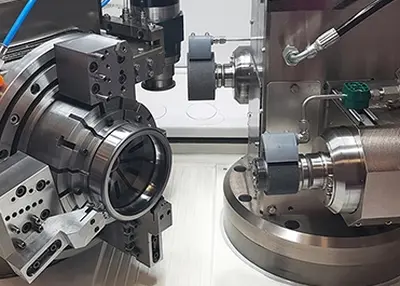 What kind of process is suitable for machining different types of parts?October 31, 2023Machining is a widely used manufacturing process and is one of the common machining methods used in the manufacturing industry for making different types of parts. Different types of parts require dif...view
What kind of process is suitable for machining different types of parts?October 31, 2023Machining is a widely used manufacturing process and is one of the common machining methods used in the manufacturing industry for making different types of parts. Different types of parts require dif...view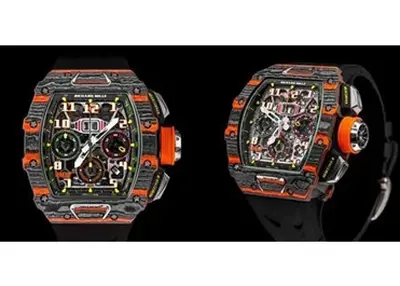 Luxury carbon fiber: NTPTTM ultra-high performance prepreg carbon fiber full resolutionSeptember 25, 2023With the improvement of people's living standards, the luxury market is booming. Many luxury goods use specialized high-tech materials in their design and manufacturing processes to ensure that th...view
Luxury carbon fiber: NTPTTM ultra-high performance prepreg carbon fiber full resolutionSeptember 25, 2023With the improvement of people's living standards, the luxury market is booming. Many luxury goods use specialized high-tech materials in their design and manufacturing processes to ensure that th...view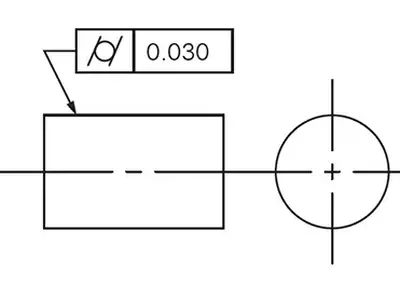 Unlocking Precision: Mastering Cylindricity for Engineering ExcellenceNovember 21, 2023In the intricate world of engineering, precision reigns supreme. Enter the realm of cylindricity - a fundamental attribute dictating the perfection of cylindrical forms. Here, I guide you through an explorative journey, unveiling the essence of cylindricity, its nuanced applications in GD&T (Geometric Dimensioning and Tolerancing), and the crucial methods to measure and comprehend this vital parameter.view
Unlocking Precision: Mastering Cylindricity for Engineering ExcellenceNovember 21, 2023In the intricate world of engineering, precision reigns supreme. Enter the realm of cylindricity - a fundamental attribute dictating the perfection of cylindrical forms. Here, I guide you through an explorative journey, unveiling the essence of cylindricity, its nuanced applications in GD&T (Geometric Dimensioning and Tolerancing), and the crucial methods to measure and comprehend this vital parameter.view GD&T Overview: What are the GD&T Symbols?August 23, 2023GDT symbols are the language used in engineering drawings to communicate design specifications and requirements for manufactured parts. GD&T symbol helps designers and manufacturers precisely defi...view
GD&T Overview: What are the GD&T Symbols?August 23, 2023GDT symbols are the language used in engineering drawings to communicate design specifications and requirements for manufactured parts. GD&T symbol helps designers and manufacturers precisely defi...view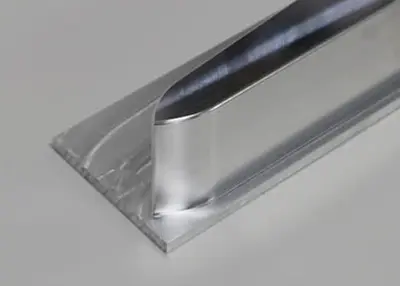 What Is Galvanized Sheet Metal? The Complete Basics to Get StartedOctober 12, 2023Galvanized sheet metal is one of the most cost-effective and popular types of metal in the market. Here are the complete basics about it for you to get started.view
What Is Galvanized Sheet Metal? The Complete Basics to Get StartedOctober 12, 2023Galvanized sheet metal is one of the most cost-effective and popular types of metal in the market. Here are the complete basics about it for you to get started.view The Functional Advantages of Custom PVD Coating in Automotive DesignJanuary 5, 2024When it comes to automotive design, every detail matters. From the sleek lines of the exterior to the carefully crafted interior, each element plays a crucial role in creating a unique and memorable d...view
The Functional Advantages of Custom PVD Coating in Automotive DesignJanuary 5, 2024When it comes to automotive design, every detail matters. From the sleek lines of the exterior to the carefully crafted interior, each element plays a crucial role in creating a unique and memorable d...view